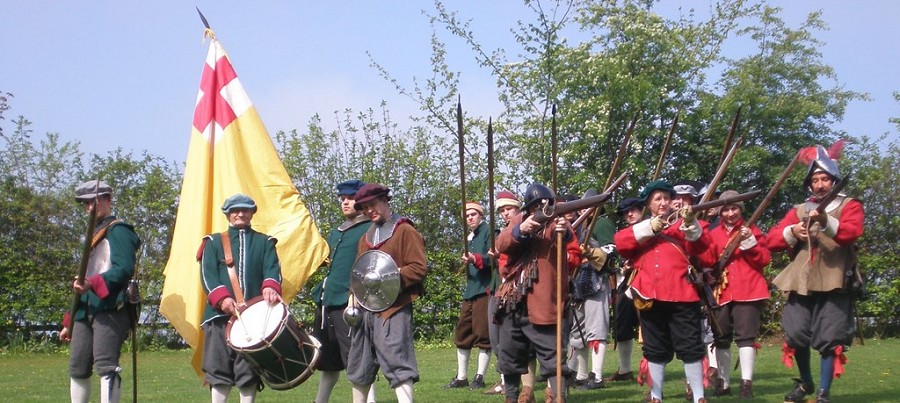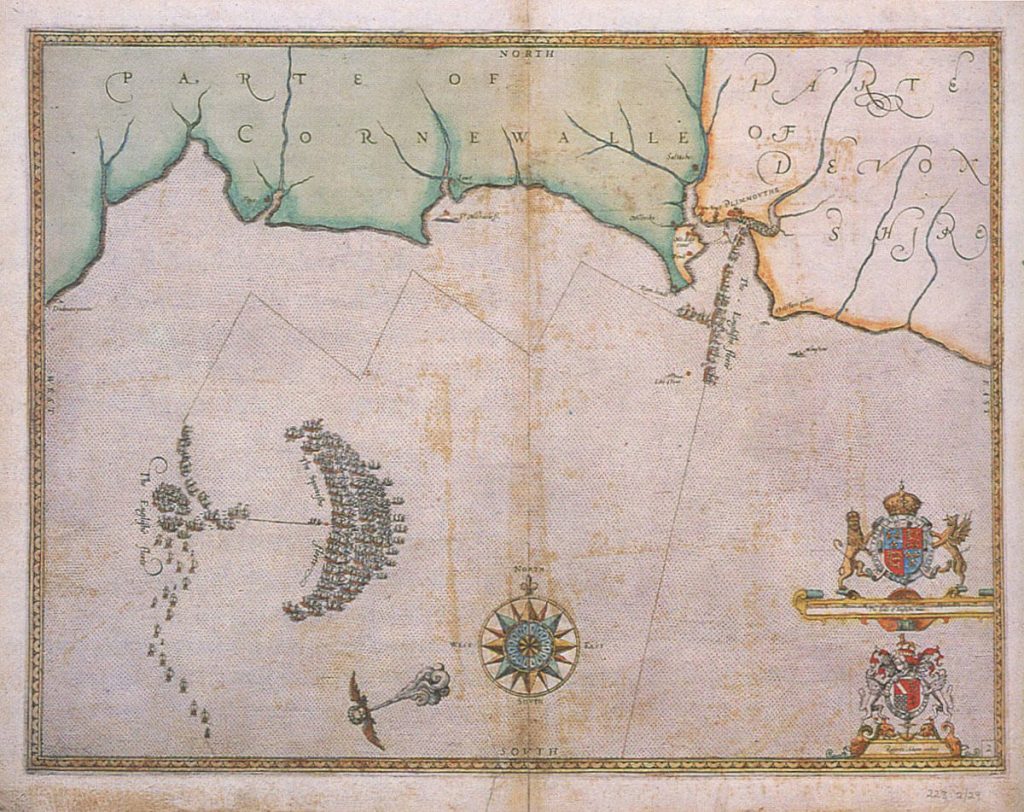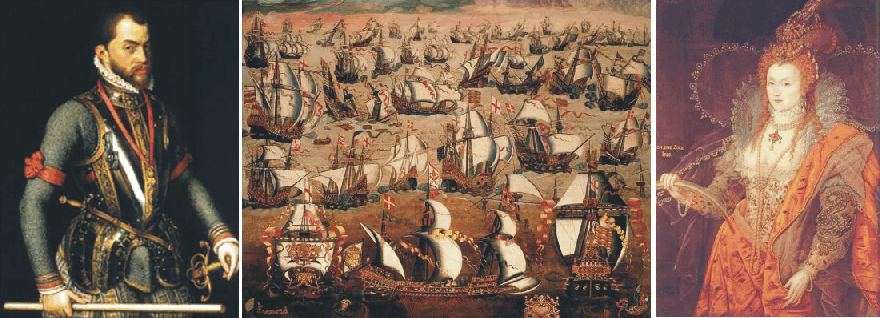By 1583 the Spanish, through a treaty with the King of France’s brother, had access to the French coast opposite England opening the possibility of invasion. To try and prevent this Elizabeth started to support the Protestant rebels in what is now Belgium and the Netherlands but by now there was clear evidence that King Philip II of Spain was building a fleet for his “Enterprise of England”. The plan was to sail from Spain, load more troops in Flanders (now Belgium) and invade England, possibly after taking the Isle of Wight. The Armada Commander, the Duke of Medina, favoured taking Plymouth first but it appears he was not keen on the invasion at all and even less of being its commander.
Preparations on the Island to counter the threat began when in 1583 Elizabeth made a yearly grant to the Corporation and Mayor of £39 10s 10d to pay 4 Gunners to man the Island and for repairs. More money was granted the following year for entrenching and additional fortifications. Although the nature of the work isn’t specified most of the original fortifications would have been around 30 years old by this point. The gun platforms would have been timbered and without maintenance would have rotted, the earthen bulwarks would have needed some repair and additional fortifications could have been for additional powder and arms stores together with the first sections of wall to be built. In 1585 it appears some militia were assigned to the Island and a letter from the Corporation to the Justices of Cornwall asks for £23 17s 4d in addition to £29 12 4d already paid for “furnishing soldiers” on St Nicholas Island showing there was a joint responsibility for the defences and militia. Whilst defences on the Island were being improved Drake himself was busy raiding Spanish ships in the Caribbean and attacked Cadiz in Spain in 1587 destroying Spanish ships of war and supplies delaying Philip’s invasion plans for a year.

Records from early 1588 state there were 8 culverins (cannon) on the Island. However 6 were from Drakes ship the Revenge showing England defences were stretched as the whole of the South coast needed defending. Armour, Calivers (an early hand gun), muskets and pikes for 350 men were also on the Island. If the Island was assaulted, during battle the Pikemen would protect the musketeers while they reloaded. 50 barrels of pitch and 40 barrels of tar for use on fireships were also stored on the Island. The Spanish fleet was spotted off Plymouth on 21st July. The English fleet sailed out of the Sound and fought an indecisive action during which neither side lost ships. The Island defences were not tested as the Spanish never entered the Sound as their commander the Duke of Medina was expressly forbidden to do so by King Philip. The critical Battle of Gravelines off the Belgian coast took place on 28th July where a combination of Fireships causing the Spanish to break formation and superior English manoeuvrability and gunnery gave the English a victory. Favourable winds, to the English at least, caused the Spanish fleet to scatter and although most of the warships made it back to La Coruna and Santander in North East Spain a large number of transports and soldiers were lost as ships floundered along the coasts of Scotland and Ireland.


A year later in 1589 the English sent their own Armada under Drake and Norrey to destroy the Spanish Fleet at La Coruna and then land near Lisbon and restore an independent Portuguese Crown. 150 ships and 23,000 men were committed but the expedition was an abject failure with 40 ships and thousands of men lost. Although both England and Spain were weakened there was still a threat from Spain. A number of invasion scares that caused defensive measures to be taken on the Island happened over the next 15 years. In the same year as the Drake-Norrey expedition, 1589, a “great platform” was reported as being constructed. This seems to be landing stage possibly to ease the loading of ordnance onto the Island or to assist in provisioning ships assembling in the Sound for foreign expeditions. The following year, 1590, a letter from Drake states there are only 12 pieces of ordnance on the Island and most of those are borrowed. During an invasion scare that year Drake organised the militia to defend the town with 1,300 men mobilised in watches. It isn’t clear how many were assigned to the Island but a Spanish spy reported that there were 100 men and 40-50 cannons on the Island. Although ordnance was transferred on and off the Island 40 or 50 cannons seems an exaggeration and English reports put the number varying between 14 and 23 pieces. The Drake-Norrey Expedition had hamstrung England financially so in 1592 a tax on Pilchards landed at Plymouth was raised to pay for future defensive works. A 1595 invasion scare resulted in the Island being garrisoned by 40 militia under the command of Ingram Barker and Anthony Goddard, both Plymothians who were paid 8d per day whilst the Island was manned. In the same year the Crown appointed a Governor of Plymouth who would also command the Island. Sir Ferdinando Gorges (he was an Englishman, the family originally came across with William the Conqueror in 1066) asked for 4s a day as governor and to appoint a lieutenant at 2s per day, a gentleman porter at 1s and 3 master gunners at 1s each. Duly appointed he was in command when 2 further Spanish Armadas in 1595 and 1596 left Spain to attack England. Both were scattered by storms and never threatened Plymouth or the Island. Yet another invasion scare happened in 1600 when Gorges was instructed to erect barricades on the Island and house a garrison of 300 men there. It seems this prompted an inspection of the fortifications including those in Plymouth and on the Island by the Queen’s Trenchmaster or Engineer Federico Jenibelli with work starting soon after which we can take a look at next week.


